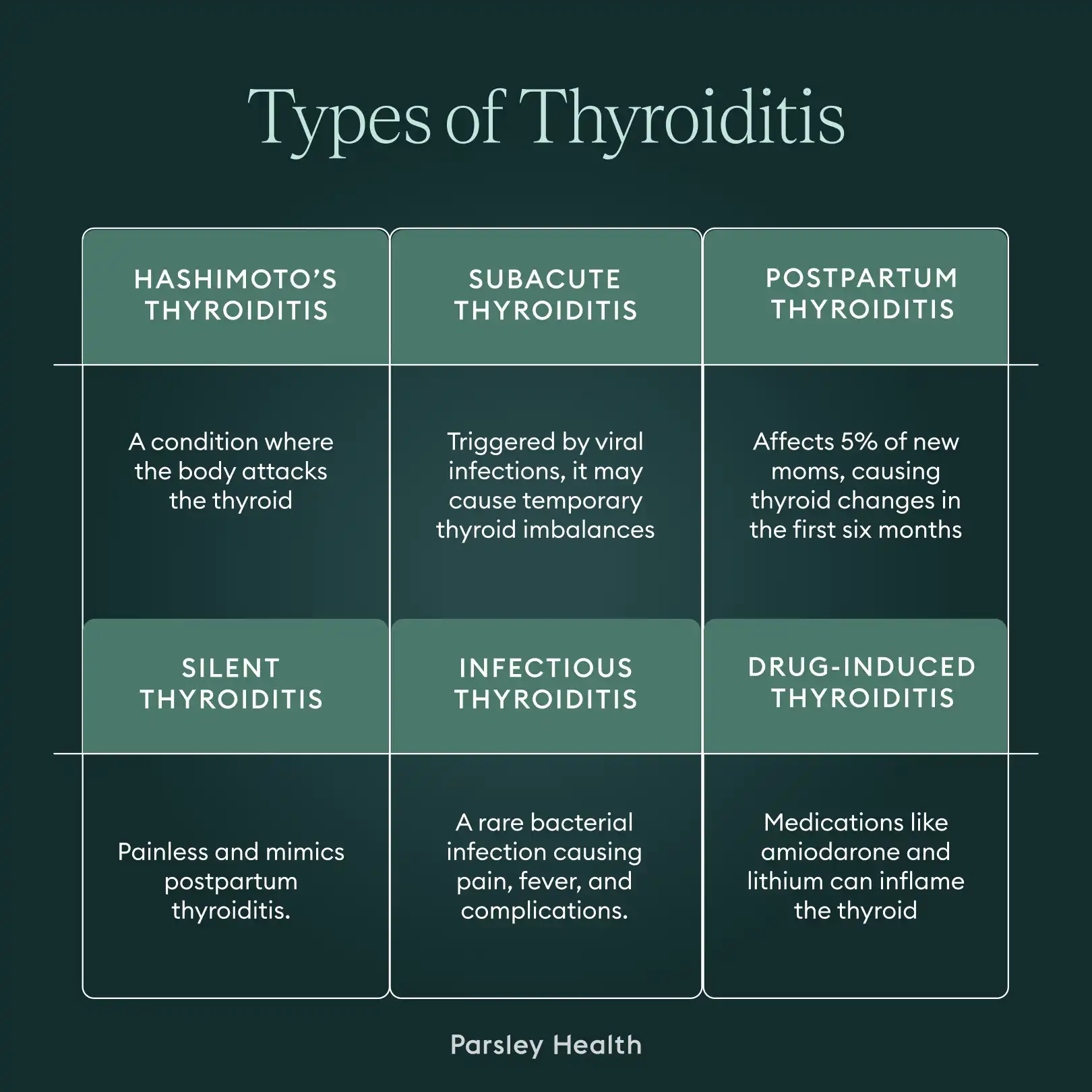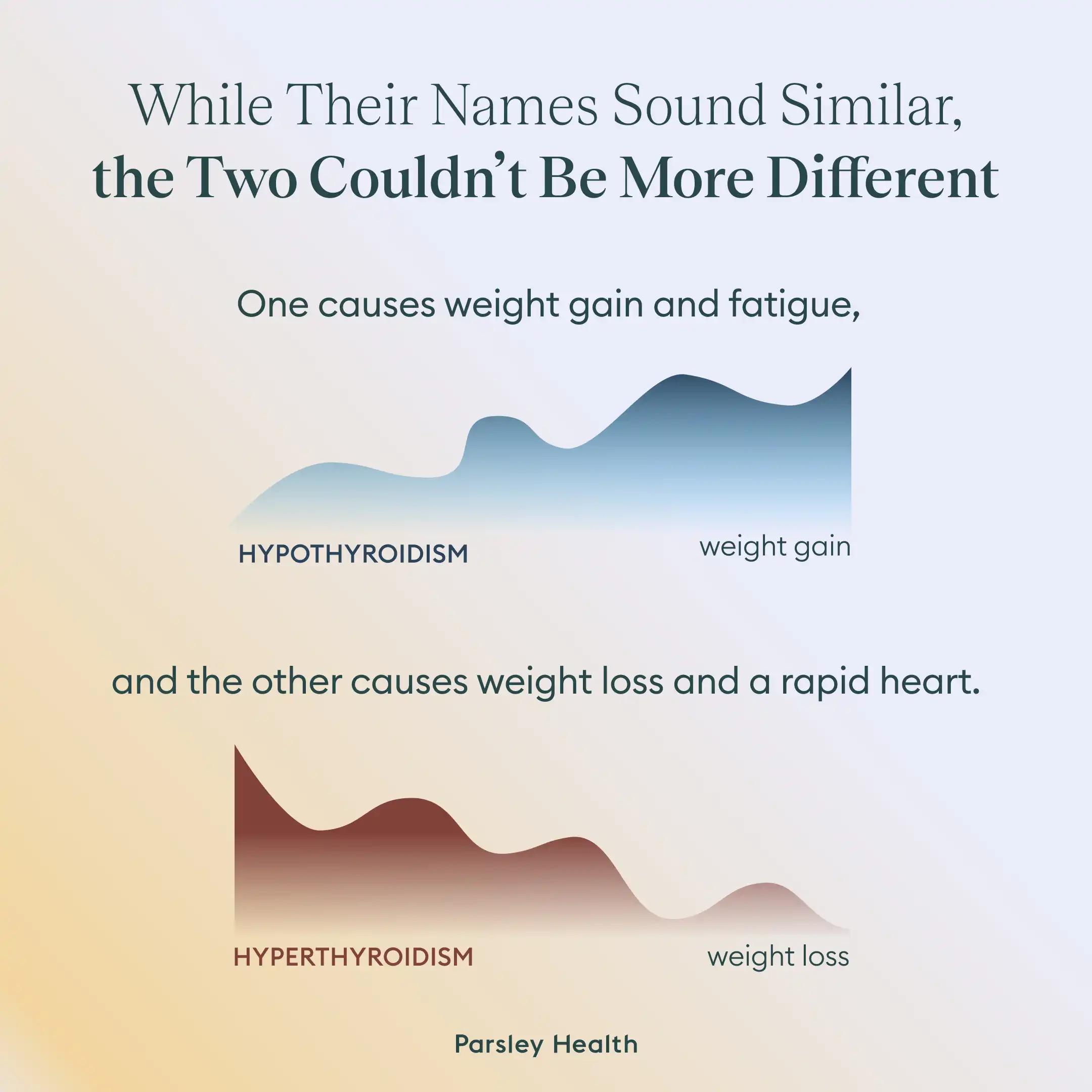Key takeaway: Thyroiditis, the medical term for an inflamed thyroid, can be tricky to nail down since there are numerous causes and symptoms—and some people experience no symptoms at all. No matter where you fall on the thyroiditis gamut, treatment options, and lifestyle changes can help.
On paper, thyroiditis sounds easy to understand: It’s the inflammation of the thyroid gland, which sits in the front of your neck. The reality can be hard to decipher, thanks to the various causes, triggers, and symptoms. Thyroiditis can manifest as hyperthyroidism (an overactive thyroid gland), hypothyroidism (an underactive gland), or with no symptoms at all. To make sense of this condition, let’s unpack the most common types, treatment options, and lifestyle changes to manage or prevent thyroid inflammation.
Understanding thyroiditis
While the thyroid is a small gland, it plays a crucial role in metabolism and your body’s development, thanks to the hormones the thyroid produces. Thyroid hormones control your body’s energy levels and indirectly impact other bodily functions such as your mood, heart rate, and breathing.
If the thyroid becomes inflamed, thyroid hormone production can be interrupted. As you can imagine, that disruption causes a ripple effect throughout the body, similar to how a car accident causes traffic for miles. To make matters more confusing, thyroiditis can manifest as hyperthyroidism or hypothyroidism. Typically, it takes the form of hypothyroidism.










